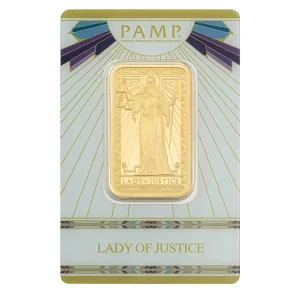Coins that are valued differently and for different reasons include numismatic and bullion coins.
Bullion coins are purchased solely for their precious metal content and are often available for much less. Though numismatic coins may or may not have greater intrinsic value, their scarcity makes them popular collectibles.
- The numismatics market is difficult to navigate, illiquid, and has a high learning curve. Investors in precious metals can avoid all of this by staying away from numismatic coins.
- The universal basis for valuation—the type and weight of the metal—is clear-cut, liquid, and understandable in the bullion market.
Bullion coin’s: Coins that are struck from bullion of precious metals are referred to as bullion coins. The most typical bullion coins are made of gold and silver, but some are also made of platinum and even palladium. Its weight is expressed as an even amount, such as 1-ounce, 1/2-ounce or even grams (for gold and silver bars).
Examples of bullion coins include:
- American gold or silver eagles
- Canadian gold or silver maple leaf’s
- South African Krug errands
Numismatic coins are generally worth more than their metal content. Incredibly rare and purchased mainly by collectors, they’re not an investment in the typical sense.
Examples of numismatic coins include:
- Swiss 20 Francs
- Peace silver dollars
- British sovereigns
What Does This Mean for Investors?
What you want to get out of your investment will determine whether you choose numismatics or bullion coins. Numismatics frequently come with a much higher risk and premium than their actual value. To keep your investment steady, you are relying on a value that is essentially non-existent. The laws of supply and demand, as well as the prices collectors are willing to pay, place a value on it. You must know the current market value of a rare coin before buying or selling it, and it might also be beneficial to take future market fluctuations into account. To comprehend various coin values, rely on well-known rating services like NGC and PCGS (Professional Coin Grading Service).
Fairness and simplicity versus complexity and complexity:
- Own a historically dependable and stable store of wealth in a form whose cost is very transparent and barely different from that set by the massive global market established for such metals. This is the value proposition of gold.
- When buying numismatics, especially as a novice investor, you immediately put yourself at a disadvantage by buying obscure coins from sellers who are typically coin experts. These coins’ values are subject to a wide range of subjective factors.
sluggish resale market
- Bullion is widely recognized and highly liquid.
- Due to the wide price ranges for collectibles, numismatics sellers may have a difficult time finding a willing buyer at anything close to what you believe to be a fair price.
enduring investment
- If you want to get the most money when you sell the numismatics coins, you must keep them for at least ten years.
- On the other hand, you might want to concentrate on bullion if your main goal is to have a haven of assets to hedge your bets against an unstable economy or the ability to roll over your gold investments into a precious metals IRA.
Takeaways
Bullion coins are a good option for people who are only interested in gold, silver, and platinum from an investment standpoint and are frequently bought as a hedge against inflation. On the other hand, rare coins are a good choice for those who see investing as just one component of the equation, such as those who are interested in numismatics (coin collecting) as a hobby or out of a historical interest.
Both bullion and rare coins can be rewarding; it just depends on what the buyer is looking for.
 Hi,
Hi,











